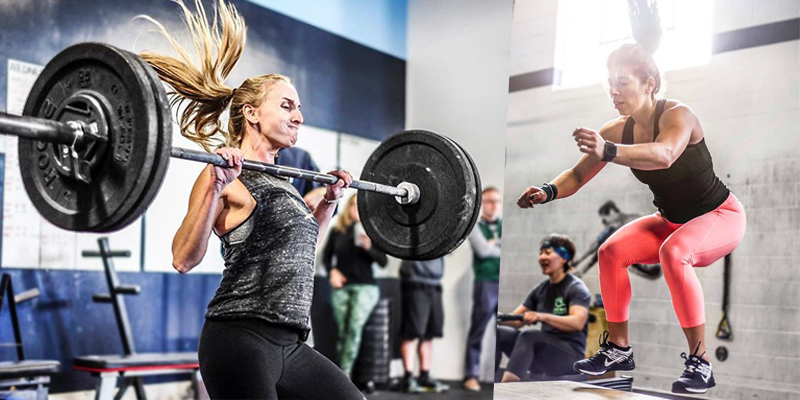
What is CrossFit?
CrossFit is a fitness routine that personal trainer Greg Glassman developed during the mid up to the late 1990s. It is designed to improve your overall physical abilities which include endurance, strength, flexibility, speed, coordination, and balance. It typically includes a combination of elements from other exercise styles of high-intensity interval training, gymnastics, calisthenics, powerlifting, and of course, weightlifting.
CrossFit for Beginners
There is a particular CrossFit workout prescribed each day for everybody that is scalable based on one’s skill. Instead of having a different program from one person to another, the workout will be the same but repetitions may vary depending on what you can only accomplish.
If you have an injury and can’t perform a specific workout, it will be substituted by a similar movement. The number of reps will be reduced depending on your ability. As you progress and gain more experience, you can work your way towards the prescribed workouts.
CrossFit can be for everybody but is certainly not for everybody. This type of workout is perfect for these types of people:
1. Weight training beginners. You don’t have to worry if you are inexperienced in weight training, this is undoubtedly a great way for you to start with the help of your training coach. With the help of your support system and non-judgmental environment, you’ll be able to learn how to do the right lifts.
2. People looking for support and community. Every workout facility of Crossfit has a tight-knit community you can turn to.
3. Fitness Junkie. These are individuals who love working out regularly. With CrossFit’s structuring, you will be working out with systematic consistency. The rule of thumb is 3 days on and 1 day off, but some CrossFitters exercise more frequently as it is very adherent.
4. Masochists. This, of course, doesn’t mean in a literal way. However, this physical activity often rewards CrossFitters who finish their workouts in a shorter amount of time as you push yourself harder to finish the reps in the least amount of time possible.
5. Former Athletes. This program has built-in teamwork, camaraderie, and competition. The majority of its workouts are time constraints in which you have to deliver the required number of repetitions or there is a fixed time where you need to see how many reps of workout you can do.
CrossFit can also be enjoyed by these people but not as beneficial as to others:
1. Specialists. CrossFit doesn’t have any focused sport, unlike those Powerlifters. Since specialists won’t be getting the best results by following the CrossFit program.
2. Sport-specific Athletes. They are similar to specialists, they require a coach that will train them in achieving great performances in a specific sport. Every sport has special training for movements that require certain types of procedures for specific muscles.
CrossFit trains you in all areas but won’t improve your specific sports skills. But many athletes combine both sport-specific and CrossFit workouts to maximize their offseason conditioning.
3. Solo trainers. This is obviously not an exercise for those people who prefer working out alone as this was ideally a group training.
The Dangers of CrossFit
Given the wrong circumstances, guidance or attitude, this workout can put you at risk.
1. During the session, you are required to deliver the number of strength training or endurance exercises in a short period or complete as many repetitions as possible within a specified period. Upon completion of your task, it is advisable to have someone to keep an eye if your form is correct. That is why a Crossfit gym should be managed by experienced and certified coaches.
2. CrossFit attracts a certain type of person, people who push themselves so hard to the point they do bodily harm. Due to its high demand for competition, motivating atmosphere and the desire to do well, many people often push themselves too far then they can handle.
3. There are instances where extreme cases of Rhabdomyolysis takes place in a very small portion of CrossFitters. This happens when people push themselves too far and too fast to the point that their muscle fiber breaks down and are released into the bloodstream endangering the kidneys to be poisoned.
How does it feel to be in a CrossFit class?
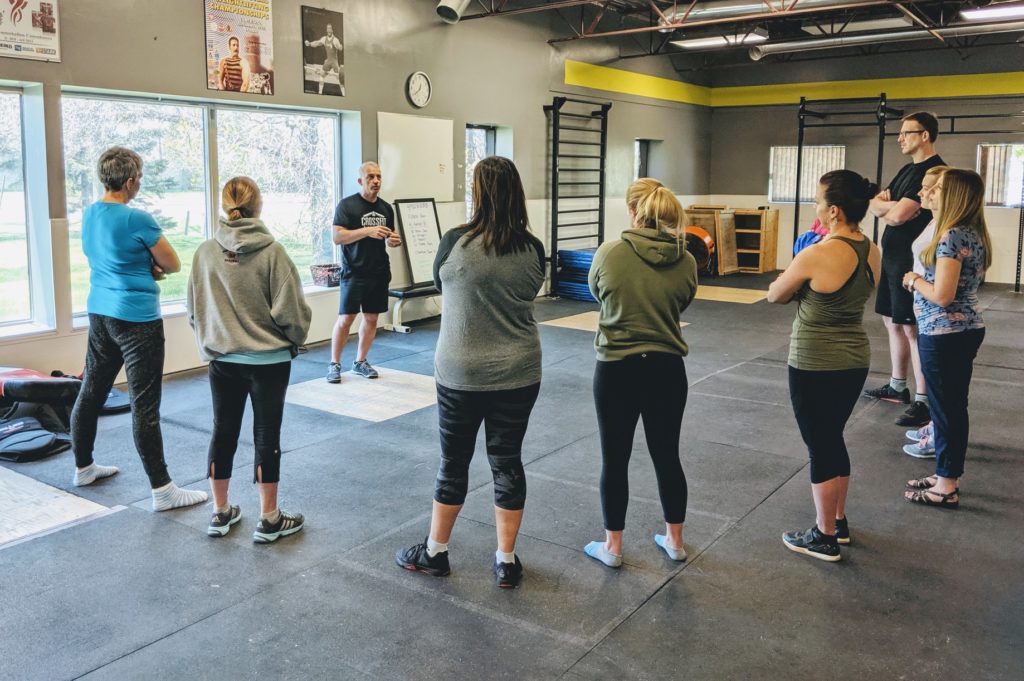
When you have been enticed to take this class, you will be primarily allowed to enter and join the class for free. The structure of the class is usually this way:
1. Introduction class – For newbies of this exercise, an overview of Crossfit will be indeed discussed followed by a basic bodyweight movement workout, and from there you will decide if you are interested in moving forward with the class, and this is usually free of charge.
2. On Ramp/Elements – If you have decided to push through with the program, you will be required to go through the On Ramp/Elements course to enlighten you with the nine foundation movements of CrossFit and its proper forms. Regardless of your experience, this session is going to be worthy of your time and money.
3. Regular Classes – This is the moment that what you are seeing and probably hearing about. Each meeting usually takes 45 minutes up to an hour.
Classes are split into 3 to 4 sections:
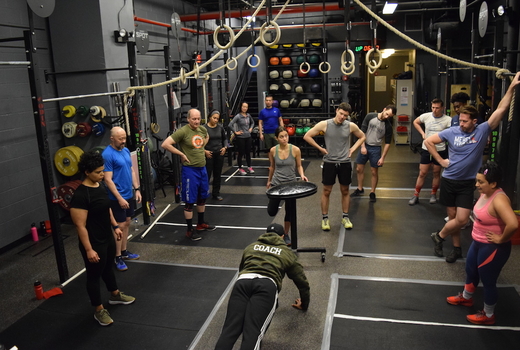
1. Dynamic warm-up – You will be doing jumps, jumping jacks, jump rope, squats, push-ups, lunges and pull-ups along with functional movements, stretches and mobility work that compliments the movements of your workout for that day.
2. Skill/Strength work – For strength day, you will work on movements like squats and deadlifts. For non-strength workout day, you will be performing a skill and try to improve like one-legged squats or muscle-ups.
3. WOD (Workout of the day) – This is where you will be instructed to do a certain number of repetitions of specific exercises as fast as possible or within a time constraint.
4. Cooldown and stretching – You are allowed or required to do this on your own or within your group.
Here is a rundown of what you might see from CrossFit coaches:
1. Level 1 – an ANSI accredited certification. This person has spent a weekend-long course and passed the required exam.
2. Level 2 – This is a level higher from Level 1. They have more in-depth training in coaching.
3. Certified Level 3 Trainer – This is for coaches who passed both Level 1 and 2 certification courses and CrossFit specific exams.
4. CertifiedLevel 4 Coach – This was a recognition after an evaluation of the coach’s abilities and it is the highest certification available.
5. Specialty Seminars – This is a day or two seminars on specific topics like gymnastics, running and Olympic lifting.
6. Other non-CrossFit certifications – this is from personal training organizations, powerlifting programs, kettlebell programs, and the likes.
CrossFit can either be beneficial or risky for you. An inexperienced coach can do you more harm than helping you achieve your health goals. Make your research on what this gym facility typically do and if they do high-rep cleans three consecutive days, then this is your clue that this gym or coach doesn’t program well.
Read more: What is Crossfit? – The beginner’s guide
Can I do this workout at home?
CrossFit gyms are usually expensive that may break your bank. If you want to save some cash while having a healthy body and toned muscles, you can follow uploaded videos online at the convenience of your home or your office gym using the right workout equipment.
What first-timer workouts that you can try?
CINDY – a benchmark workout that can be done anywhere with a pull-up bar and often used as a warm-up in CrossFit. This is a 20-minute AMRAP (as many rounds as possible), within this period you can do 5 reps of pull-ups, 10 reps of push-ups and 15 reps of squats repetitively within that time frame.
These are variations of CrossFit for beginner athletes:
If this sounds too easy for you, you may increase the intensity of your workout by going faster.
1. AMRAP (20 minutes)
Pull-ups: 3 reps
Push-ups: 6 reps
Squats: 9 reps
2. AMRAP (12 minutes)
Pull-ups: 5 reps
Push-ups: 10 reps
Squats: 15 reps
3. AMRAP (12 minutes)
Pull-ups: 1 rep
Push-ups: 4 reps
Squats: 7 reps
4. AMRAP (10 minutes)
Pull-ups: 1 rep
Push-ups: 4 reps
Squats: 7 reps
What are the benefits of CrossFit?

1. Great community aspect. Compared to a commercial gym, you get the chance to know other people in your class. There is a feeling of teamwork and camaraderie in your group.
2. Constant coaching and support. During your session, you have a coach that will keep an eye on you if you are doing the exercise right.
3. During your absence, people will immediately notice and check up on you. This never happens in a commercial gym, if it does, it is when you miss a session with your paid trainer.
4. Leveling up. Due to the reason that you can keep track of your progress, you are aware of how many repetitions you can do, and you’ll get to see constant improvement.
5. Humbling yet encouraging. You might finish your workout with your back lying on the floor but with the sense of accomplishment; that you were able to finish the exercise faster compared to your previous sessions.
6. Competition. You’ll push yourself working out harder surrounded by other CrossFitters cheering you on and competing with you.
7. It introduces so many people to weight training, especially women. It entices most of the people who would have never attempted to get off the treadmill and strength train.
8. It is a good outlet for former athletes who like to compete. Athletes are used to competitions. This is an outlet for people who are into a competition.
9. You get to find out what you’re made of. CrossFit teaches you to push your mental barriers to its limits that will build your mental toughness.
10. It builds great physiques. It is looking good even when you’re naked, that’s what every CrossFit athletes are.
11. Builds muscular endurance and all-around fitness. Your body will be prepared for any physical activity because of this program.
Read more: Proper Form of Deadlift – Strength Training 101
What are the downside effects of Crossfit?
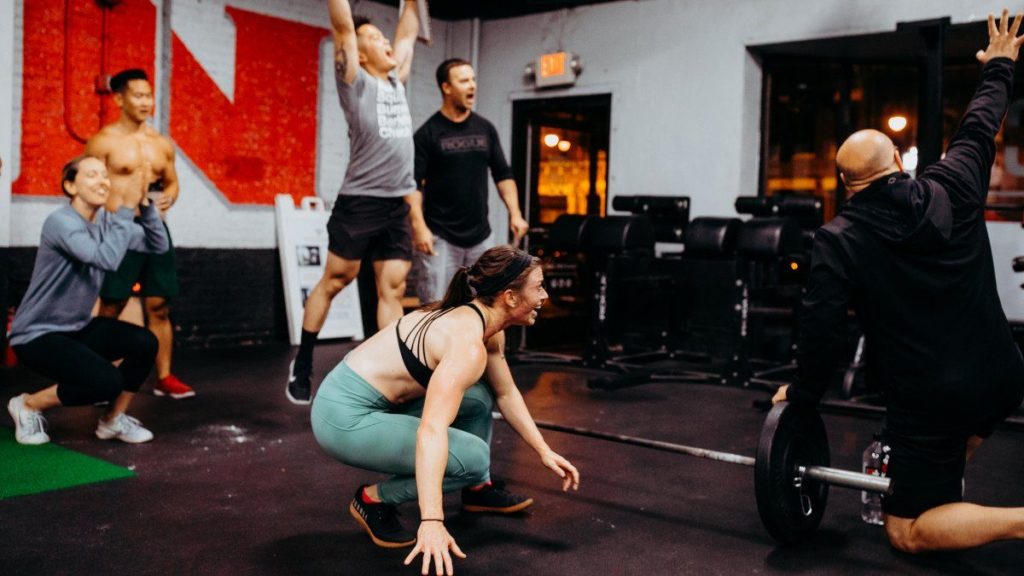
1. Not recommended for specialization. You can be good at a lot of things but cannot be great at anything. For specialization, you may seek the help of a sport-specific coach instead of a CrossFit Trainer.
2. Lacks consistency. You will rarely do the same workout twice which will be hard to track one’s progress.
3. Odd programming. Some CrossFit gyms allow high reps of snatches or Olympic lift that requires a perfect form to be done successfully. Doing high reps of them is a sure way of sacrificing your form and will increase your risk of injury.
4. Expensive. Classes can be twice or thrice the cost of your commercial gym and the cost that you will be paying is only the access to your group class that excludes the charges on the whole facility.
5. Bad coaches will cause you big problems. You have to make sure that your coach is well trained in the proper moves and form of this program and won’t rush you to do anything.
6. Maximize your time as possible. This is where your form starts to slip to finish your reps faster.
7. You start talking CrossFit jargon. CrossFitters oftentimes missed out that nobody outside their class can understand the languages that they are trying to converse.
8. You can get addicted. This can make or break you, depending on how you look at it. But few people who are enrolled in this class that always do or talk about their sessions.
Whether CrossFit do you good or the other way around, you may already have an idea if this workout fits you or not.
Comments
0 comments

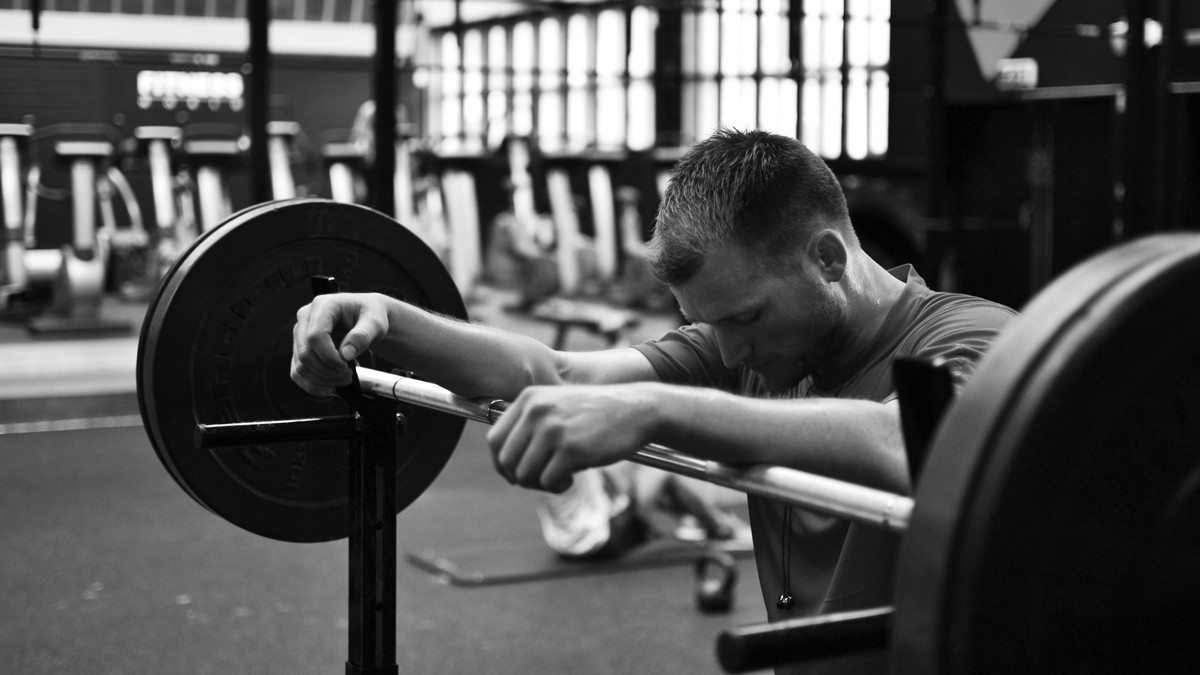
Muchas gracias. ?Como puedo iniciar sesion?
The point of view of your article has taught me a lot, and I already know how to improve the paper on gate.oi, thank you. https://www.gate.io/fr/signup/XwNAU